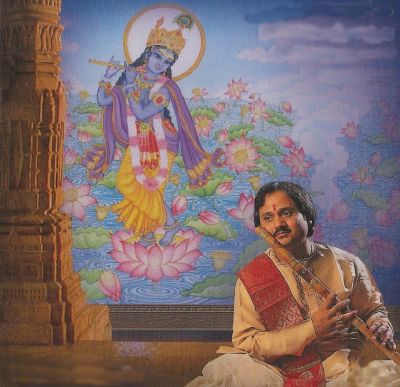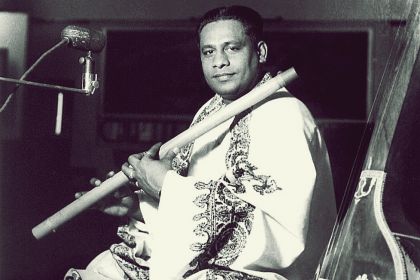Bansuri
Hindustani flute by Ronu Majumdar brings meditative mood to classical ragas

Hollow Bamboo
Ronu Majumdar is the most influential Indian flutist of our time whose impressive output touches upon most aspects of musical life. His contribution to establishing the bansuri flute as a full-fledged instrument of Indian classical music can hardly be overestimated, and his meditative melodies are known through Bollywood films and international collaborations with Western musicians of various genres.
Following in the footsteps of the iconic bansuri musician Pannalal Ghosh, Majumdar not only elevated the flute's status from folk whistle to the classical instrument of the Hindustani tradition but also developed his own flute design known as shank bansuri containing an additional octave in the lower register.
Unlike the vast majority of Indian classics whose musical talents are cultivated by centuries-old traditions of their family dynasties, Ronu Majumdar did not have outstanding musical relatives and became the first musician of his family. Thanks to his obvious talent, he received a splendid formal training from the legendary sitar maestro Ravi Shankar who taught the gifted flutist the canons of Maihar gharana, one of the most influential schools of Indian classical music.
It was also Ravi Shankar who launched Majumdar's international career when he invited the flutist to record the work Passages, marking it as the main connective link between Western and Indian classical music. Subsequently, Majumdar's bansuri music has spread far beyond the Western classical music audiences and earned the flutist world recognition for his collaborations with renowned guitarists Ry Cooder and George Harrison.
Listen to Krsna Kantha Kandam by Ronu Majumdar and Ry Cooder:
Although all international releases featuring Ronu Majumdar deserve close attention, the true nature of his bamboo flute is closely revealed in his interpretations of classic Indian ragas. Indeed, the slightly muffled sound of bansuri conveys a meditative depth and gives butter-like smoothness to melodic lines. The soundscape created by bansuri is quite different from Hindustani music performances that use more familiar plucked string instruments such as a sitar or sarod which swap the bansuri smoothness for the sharp attack, bringing a much faster decay of sound.
Listen to Varanasi My Soul (Banarasi Kajri), Ronu Majumdar's tribute to his birth town set in Raga Pilu:
Raga Pilu is considered to be a light raga commonly used to express joy, happiness, devotion, and love. Mainly based on Kafi thaat—Hindustani music scale equivalent to the Dorian minor in Western theory—Pilu raag is performed wider than the diatonic scale suggests given that musicians often draw extra tones to expand the scale to ten notes per octave.



